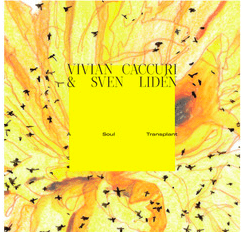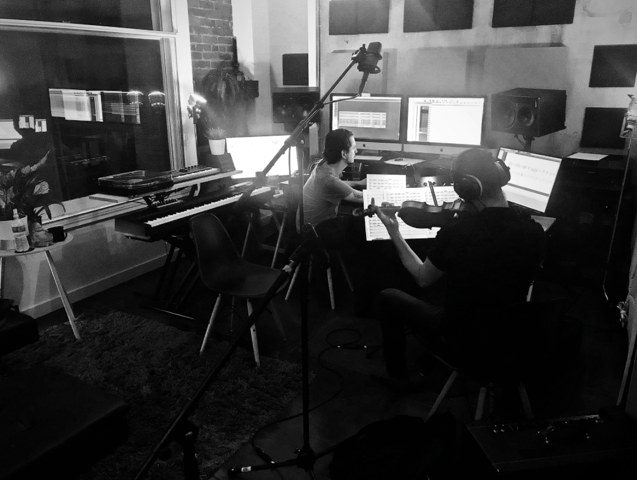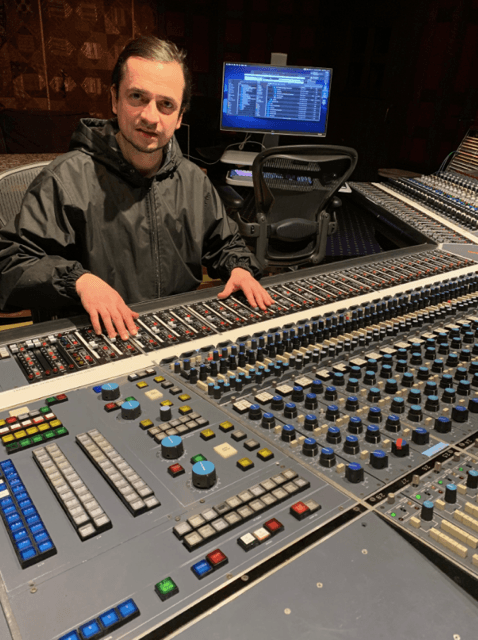
During this award season of BAFTA, Oscar, Golden Globes, Grammy’s, and others, you’ll hear many of the winners stating that the work the public recognizes is the creation of many professionals behind the scenes. There are professions who never receive their public praise, but whom receive it directly from the artists they collaborate with. For these individuals, the reward IS the work. Producer Cadu Byington has a skillset which makes him employable in a cross section of mediums. One day may find him working on the musical accompaniment to a major film while the next finds him with a different music artist on their original release.
Byington is very much the connective tissue between a music artist’s vision and the public’s reception of it. If ever there was a “behind the scenes” celebrity in these worlds, Cadu is it due to his ability in transforming “vision” into audible reality. Music moves us, regardless of age, culture, or any other delineations the world has set in place. Whether accompanied by images and a story or allowing the listener to create their own narrative, what Cadu Byington brings to its creation is both essential and exceptional.

When composer Eduardo Aram was hired to create the music for the award-winning documentary film Runner (also known under its alternate title Runner Without a Country), he made certain to bring Cadu as his musical producer on the project to ensure his score would materialize as he imagined it.
Eduardo Aram is recognized internationally for his work on such productions as the Netflix mini-series The Devil Next Door, Univision’s hit series El Chapo (recently picked up for international distribution by Netflix), the award-winning TV film Cocaine Godmother (aired internationally on Lifetime Network), the award-winning Brazilian TV series Under Pressure, the Academy Award-winning documentary film Amy, and the televised opening ceremony of the 2016 Olympic Games.The excellence and global notoriety of his work affords this composer the opportunity to work with the leaders in the industry, which in Aram’s opinion is Byington.
In addition to all facets of the music production/recording, Cadu also took on the task of orchestration for the score, including adapting Aram’s piano melodies for string quartet. This film about a man [Guor Marial] who ran from war-torn Sudan, eventually ending up in America and qualifying for the 2012 Olympics, has received a deluge of awards including Best Documentary at the Fairhope Film Festival, Naples International Film Festival, and numerous others.
The musical score is the exponent which intensifies the gripping story of this Sudanese man and his path to greatness. Guor’s course from refugee to world-renowned athlete is thematically presented in the tempo escalating “Runner Theme” and the “Left to America Theme” whose repetitive simple melody builds and evokes hope. The minimal instrumentation is powerful, mirroring the man which the film centers upon. Cadu’s near decade and a half of experience with orchestration, coupled with his producing skills, left a massive fingerprint on the film.

In the same way that an actor might use the live stage and film to balance and strengthen each other, Byington often finds himself working with music artists on their original recordings when he’s not enlisted for a film. Vivian Caccuri is an award-winning sound artist and composer from Brazil who procured Cadu to work on a very unusual and collaborative recording. Though Caccuri had recorded a multiple movement piece titled “A Soul Transplant” for an exhibition at Gothenburg, Sweden’s famed Roda Sten Konsthall gallery, the recording would not be finished until it was expertly mastered; courtesy of Cadu.
Mastering is the process by which the texture and differences in music is expanded. No truly professionally recorded and released music is void of the mastering process. It accentuates what the artist has created and creates a greater feeling of three-dimensionality to a recording. Cadu took “A Soul Transplant” to one of his favorite locations, LA’s legendary NRG Studios where you’ll find contemporaries like No Doubt, Kanye West, and others working on any given day.
Regarding his work on the piece and choice of NRG, Cadu relates, “We chose NRG because they have a huge collection of analog gear that is perfect for a mastering project like this one, where we had to experiment with dozens of EQs and Compressors. Also, the monitoring system is amazing. It’s always a blast when I’m there. It’s been the location for so many great artists and recordings; it feels like a sacred temple. The genre of this particular piece is ‘Electroacoustic music’; that’s a genre where you manipulate recorded sounds with electronic devices and sometimes also integrates electronic sounds.
These techniques are spread over all genres nowadays. This particular piece was written for organ and recorded in Sweden, as well as the mosquito sounds. It’s all part of a big and very rich series of art pieces based on mosquitoes. Vivian’s art has been all over the world. Most of it is visual-sound art.”
The breadth of applications of Cadu Byington’s work on these two incredibly different projects displays how professionals like him in the modern era are less willing to be locked in to one specific career course. It’s talent that is versatile and malleable, and of course exceptional, that becomes sought out by the progressive and creative forces in all mediums. Many say that the sincerest artistic path is one which seeks to constantly grow and produce one’s best work without the thought of fame; Cadu Byington is a testament to this concept.